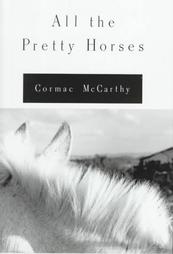If we lived in a society where equity, respect, access, and justice were realized, and unearned privilege and inequality and oppression were transformed, the impact of trauma exposure in our lives would look dramatically different. Suffering would still occur. People would sustain injuries and contract illnesses and even hurt each other. The difference is that we would only have to confront that suffering at face value: an injury, an illness, a hurtful act. We would not have to wonder if disparities between rich and poor, white people and people of color, heterosexual people and gay/lesbian/bi/transgendered people, and so on contributed to the suffering. We would not have to wonder if we personally benefit from the disparity that underlies the suffering. We would not have to wonder if we are vulnerable to the same disparity. We would not have to decide whether we should act to change the disparity, or if we should blame the person suffering for the disparity, or if we should ignore the disparity altogether.A friend of a friend sent me this book after overhearing me talk about how exhausted I was. We were at lunch with a big group, and I had spent most of the meal talking to the person across from me about how drained I was by the injustices my students face on a daily basis--how hard it was to listen and support and love them without getting so personally involved that I felt their pain myself. This girl (who I had only met once or twice before) leaned over and asked for my address. When we got home from our trip, this book was waiting on our doorstep. I waited months to read it, partly because I was in denial about how hard school would be once it started up again, partly because the word "trauma" in the title put me off: was I really a trauma steward? I'm not an E.R. doctor or an army psychologist; I could think of dozens of jobs more traumatic than mine.
Eventually, school got stressful again (it took about two days), and when I finally had room in my reading schedule, I picked it up. I only wish I'd found it years ago. While initially I was afraid that I wouldn't recognize myself as part of the book's intended audience, I ended up rereading passages over and over because of how deeply they resonated with what I had been feeling. Lipsky and Burk carefully outline their definition of trauma stewardship--tending to the pain and suffering of others while still tending to oneself--and then walk readers through what they call "trauma exposure response." This section was a little overwrought: they describe sixteen different signs that you might be suffering from trauma exposure (sixteen is too many anythings to list), but each of the symptoms felt so real and familiar, that I forgave them for a few redundant descriptions.
After convincing you you have a problem, the authors outline their path to effective trauma stewardship. In brief, they encourage people who do this kind of work to engage in inquiry around their jobs, both to renew their passion for what they do and to reconsider whether they are in the best line of work. They encourage us to find microcultures of support and positivity, to practice gratitude, to engage actively with our lives outside of work, and to engage in some kind of centering practice--they recommend mindfulness, but provide other options as well. This part of the book is clear, concise, and to the point. They use some new agey metaphors from Eastern religions and spiritual practices that might induce the occasional eye roll, but overall the advice felt real and relevant. This is helped by the fact that they have scattered narratives throughout of people who have come through traumatic jobs and found themselves on the other side, either by making small shifts or leaving entirely.
I think the thing I appreciated the most about this book is that it didn't provide one clean, neat solution. Lipsky and Burk acknowledge that for some people the best solution is to leave, while for others a renewed engagement in the work is all that is needed. For each end of the spectrum and everything in between they provide kind, gentle, not judgmental guidance; I felt better each time I picked the book up, and it's helped me come to terms with the toll my work has taken on my mental health, my ability to be present in my relationships, and my sense of optimism for the future. I haven't made any big, dramatic changes yet, but being given the permission to do so has already made a difference.
Side note: they use a TON of New Yorker cartoons as comic relief and section breaks which I very much appreciated.
If you're feeling tired or burnt out and your job involves caring for others, this could be the book you need to read. Send me your address, and I'll pay it forward.











